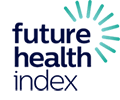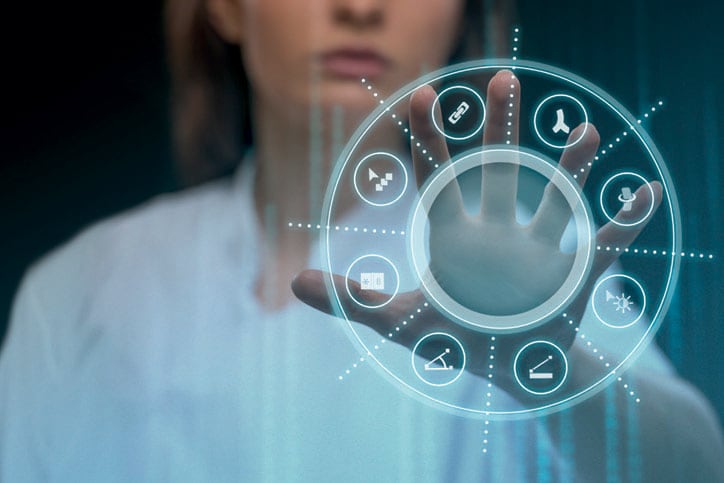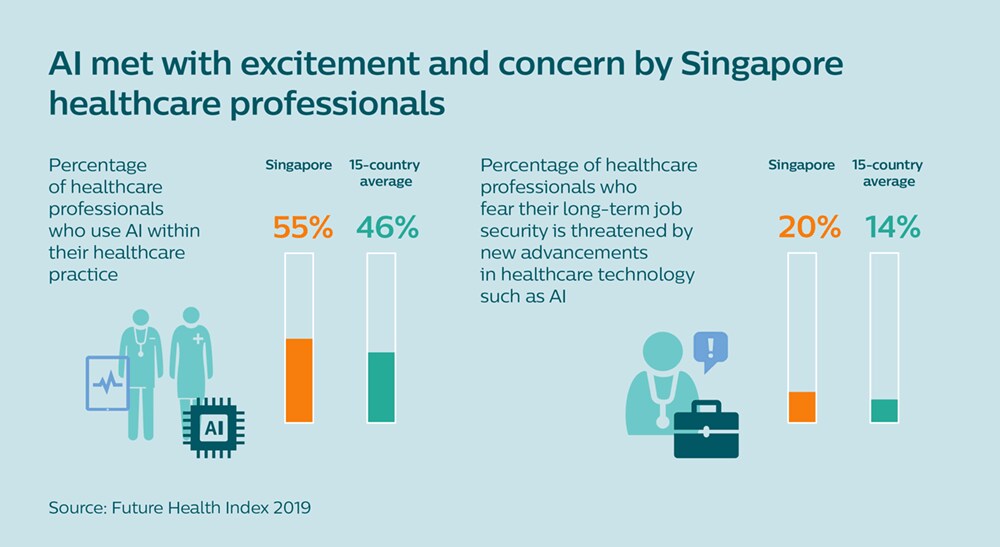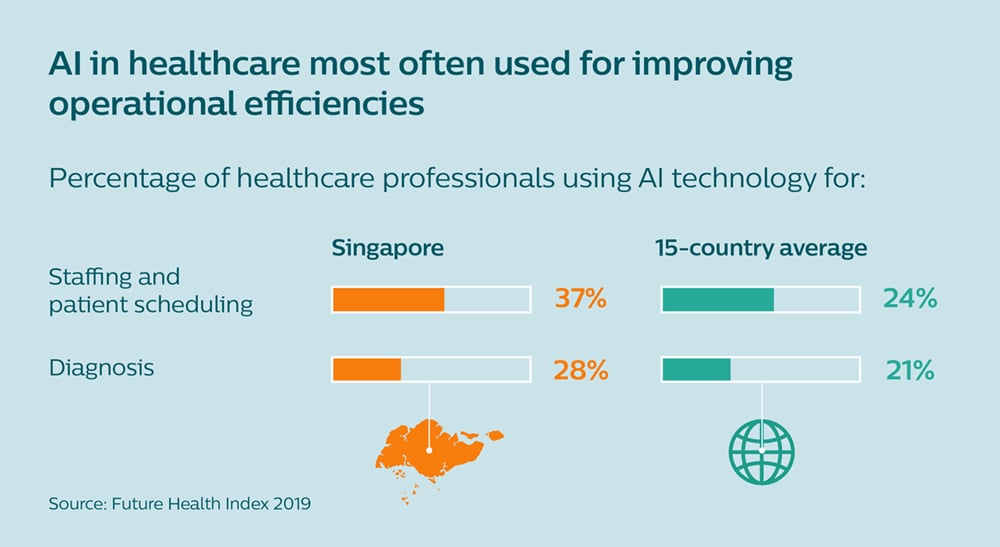How AI will shape the future of precision diagnosis

Get the latest Philips Future Health Index news in your mailbox

Oct 10, 2019 - reading time 9 mins
Business Leader, Precision Diagnosis, Philips ASEAN Pacific
Mr. Peter Quinlan is the Business Leader for Precision Diagnosis for Philips ASEAN Pacific. In this role, Peter leads Philips’ Precision Diagnosis business cluster across the region, which focuses on bringing together businesses related to the future promise of precision systems, informatics, solutions and services.
Peter’s experience in the healthcare industry spans more than 14 years. Since joining Philips in 2007, he has held healthcare leadership positions in Australia, New Zealand, Singapore, and also Philips’ headquarters in Eindhoven, The Netherlands – in areas such as Image Guided Theraphy, X-ray, Cardiovascular Imaging.

“Artificial intelligence beats doctors at diagnosing disease” is the kind of popular headline you are likely to come across these days – hinting at the possibility that algorithms may one day take the place of physicians. But instead of pitting AI against human experts, what we should really be focusing on is how they complement each other’s strengths in the diagnostic process.

Excitement and concern among healthcare professionals
The pace of progress in artificial intelligence (AI) is dazzling. Every day new studies are published which demonstrate how AI holds incredible promise for detecting disease with high levels of accuracy – whether it is through screening eye exams for early signs of diabetic eye disease, or analyzing electrocardiograms to catch irregular heartbeats that could point to heart rhythm disorder. Industry analysts expect healthcare to be leading the way in AI investments between 2018 and 2022, with the Asia-Pacific region strongly positioned to drive growth because of its fertile digital ecosystem. It’s a development that is met with equal excitement, curiosity, and concern by healthcare professionals in the region. Take Singapore, for example. The recently released Philips Future Health Index reveals that healthcare professionals in Singapore are frontrunners in the use of AI, with 55% of them using AI in their daily practice – compared to an average of 46% among the 15 countries surveyed. But there is also hesitation: one in five healthcare professionals in Singapore fears their long-term job security is threatened by new advancements in healthcare technology such as AI. I believe these concerns will ultimately prove unwarranted – if we take a human-centric approach to AI that focuses on the biggest challenges faced by physicians today.
Drowning in information, starving for wisdom
Diagnosing complex diseases like cancer can be a time and labor-intensive process. Many different specialists and tests are involved. Depending on the disease, findings from physical exams need to be combined with medical images, analysis of tissue samples, as well as genomic and molecular data – while also taking into account possible comorbidities and the patient’s medical history. Intelligently aggregating all this information is the hallmark of precision diagnosis. Handling this complexity is no easy feat, however. “We are drowning in information while starving for wisdom” is a famous quote from Harvard professor E. O. Wilson that perfectly captures the challenge for physicians. According to a study by IDC, the amount of data in healthcare is growing by an estimated 48 percent every year – leaving physicians little time to make sense of it. Couple that with a rising disease burden from an aging population, and it should not come as a surprise that in a country like Singapore, up to eight in ten doctors report feeling burnt out as they struggle to keep up with a mounting workload. AI could provide them a helping hand.

Turning precision diagnosis into a reality
With its ability to sift through large amounts of data, AI has the potential to make medical examinations more precise, reliable, and efficient. For example, in CT-based lung cancer screening, researchers at Philips have demonstrated that a deep learning algorithm may be helpful to radiologists as a decision support tool or second opinion. Similarly, in digital pathology, algorithms can point to regions of interest in tissue samples that demand further inspection by the pathologist, while making it easier to discard slides without signs of cancer. And by unravelling the molecular mechanisms that give rise to an individual’s cancer, we can truly begin to understand how targeted treatment may help that individual. Next to the interpretation of medical data, AI can also support with ancillary tasks such as patient scheduling. In fact, the Future Health Index shows that this is where AI already has the largest adoption – pointing to a strong need for improved operational efficiency. By automating the mundane and speeding up workflows, AI can alleviate overburdened physicians. For example, AI can support planning, execution and processing of MR exams, helping improve the entire workflow. As another example, natural language processing can help to quickly extract and collate patient information from a multitude of medical records, giving multidisciplinary teams the comprehensive overview they need for optimal decision-making.
Reimagining the role of the physician
As these examples show, the point of AI is not to overtake the role of physicians in the diagnostic process. It is to help them focus on what they do best. The truth is that many elements of the diagnostic process defy a straightforward algorithmic approach. Algorithms excel in the rote execution of narrow, specific tasks that rely on pattern recognition, provided clean and structured data are available. But in the day-to-day reality of healthcare, data are often incomplete and unstructured, and multiple strands of information need to be synthesized into a holistic assessment of a person’s health or condition. This is where the human mind is still infinitely more capable than the smartest algorithm. Rather than making radiologists or pathologists redundant, AI will enable them to operate at the top of their game. As AI relieves them of mundane chores, they will have more time to focus on complex cases, advise on treatment options in multidisciplinary settings, and to discuss findings with patients. These are all tasks that uniquely rely on human skills. As such, they could provide new sources of professional satisfaction – with patients benefiting in equal measure.

Five priorities going forward
As we continue on this exciting path, how we can fully reap the benefits of AI for precision diagnosis? I see five priorities: With these five priorities as a foundation, I believe AI is poised to become a cornerstone of precision diagnosis, paving the way for more personalized patient care. Not by replacing doctors, but by complementing the work that doctors do.
AI should be a helpful, unobtrusive assistant that is seamlessly embedded into clinical workflows. This calls for co-creation between physicians, engineers, and user experience designers. Capabilities in AI and data science must go hand in hand with proven medical knowledge and a deep understanding of clinical workflows. One cannot go without the other.
Data is the lifeblood of AI and precision diagnosis. This is where we still have work to do as an industry. According to the Future Health Index, 35% of healthcare professionals in Singapore do not share patient data outside their health facility because of lack of interoperability. It is crucial that we create better ways to extract and integrate information across systems and providers.
In healthcare, where lives are at stake, it is imperative we have high standards for the safe and responsible use of AI and health data. Research findings require rigorous validation in real-world clinical settings. Through training and education, we must foster awareness of AI’s strengths and limitations among physicians as well as patients.
Asia Pacific’s health tech ecosystem is already the second largest in the world after the US, offering plenty of opportunities for wider industry collaboration. Corporations, start-ups, academia, and healthcare providers can all leverage off each other’s strengths in creating new AI-enabled solutions. At Philips we are taking a proactive role in this, for example via our IntelliSpace Discovery platform [1] – which is used by medical researchers at hospitals and academic institutions to develop and deploy AI algorithms for research purposes.
Governments across the Asia-Pacific region recognize that growing and nurturing AI talent is critical for accelerating innovation. Educational programs such as the AI for Everyone Initiative in Singapore can spark wider interest in AI and its potential for industries such as healthcare. To spur innovation from within the industry, it is also essential that the basics of AI and data science are embedded into medical curricula.
[1] Philips IntelliSpace Discovery is for research use only and cannot be used for patient diagnosis or treatment selection.









